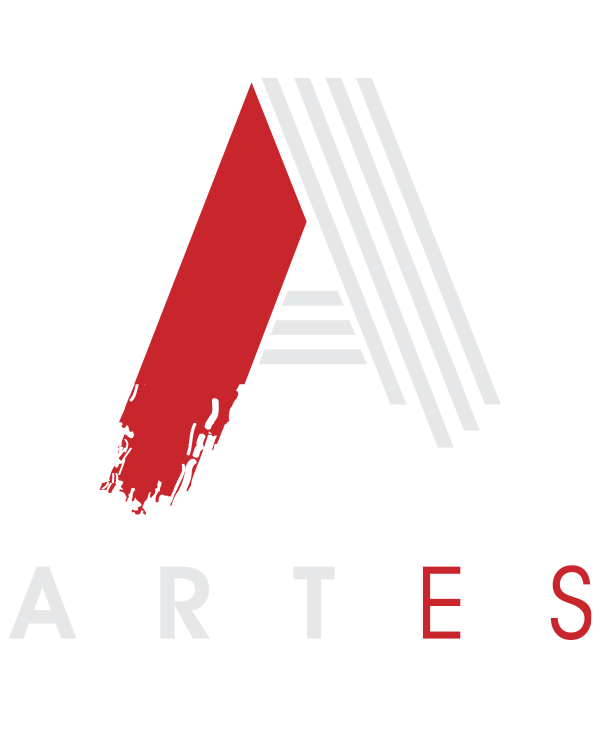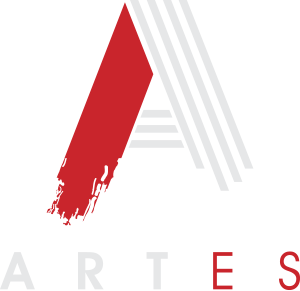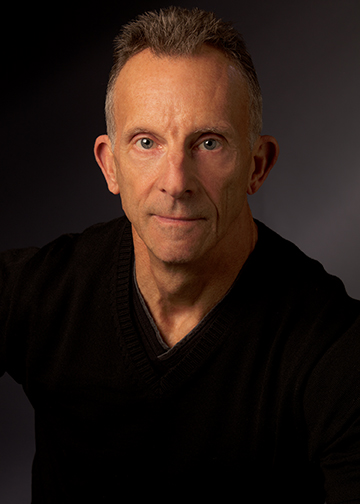About Chuck Whited
Forward Vision
by John VandenOever
For more than 25 years, Chuck Whited of C&M Backdrops provided an astonishing array of scenic design to Atlanta’s production industry. Now these incredible assets live on with the students and faculty of Florida State University.
Everyone begins precisely where Chuck Whited started—with a thick crayon in his fingers, creating images from the world around him. For Whited, there was always power and beauty in these lines, which gave birth to shapes, and finally became scenes. As he took note of other, more proficient artists, his passion and talent forged into a marketable craft until he was studying under the great printmaker, William Walmsley. Yet, like many college graduates, he didn’t at first pursue a career directly in line with his studies. In fact, it would be years before Whited’s creations became his career.
“I was in the wrong business,” Whited says, of his career beginnings. Always a fan of classic cars and auto shows, he took his fine arts degree from Florida State into automotive agency work. He was surrounded by some of the things he loved, but not yet doing what he loved. But his design aesthetic wouldn’t stay under wraps for long. He became involved with agency car shoots, was put in charge of small crews, and learned the art of lighting cars, their paint shining bright and spotless. “I learned a lot fast,” which gave way to Whited art directing and experimenting on a few, early scenic backdrops.
He was in his thirties, working on a graduate degree in art history, when he began working independently on a film project for a friend. “I’d never painted anything that large before,” he says of the backdrop he created. His friend liked the work so much that he told Whited if he wasn’t in the industry already, he was in the wrong one. “I took a leap of faith,” says Whited, about starting the business, C&M Backdrops, out of nothing.
Over the ensuing 25 years, Whited established himself as a premier source for custom-made backdrops and art direction. And as his inventory grew, so did his client base: including major car and beer brands, cable channels, major league sports, big-name music acts, films and television series.
When Whited completed a custom project, often he’d be asked how he was able to produce such an expressive piece, with such fine scenic detail, but he’d just shrug. Knowing the recipe was a simple mix of hard work and inspiration. An avid international traveler and art history buff since his undergraduate days, Whited says, “I’ve studied everything. There are images in my head from structures all over the world.” In fact, the process became like second nature. “You have that base of knowledge, and you don’t think about where you’re pulling from until the project is over.”
And he was always pressing to become better, to find new challenges through an ever increasing variety of clients. “I’ve been blessed with a lot of variation, there’s never been a dull moment.” Whited grew up in a sports-focused home and discovered he was gifted in many athletic pursuits. Later in life he got into competitive cycling, rating as a category one racer. “I love the competitive nature of it,” he says. “It takes a lot of focus and attention—it’s a hard sport.” But it fit well with his personal drive to be the best at whatever he set his mind to, determined to put in the work—which in the case of cycling required rides of 30 miles a day—for the satisfaction that comes with the result.
This ethic garnered him a high standard of success, but it also entrenched him in a routine of 12-hour work days. After several decades’ investment in making C&M an essential resource to Atlanta’s production industry, Whited wanted to change the pace. “I love to work; I love being in the business. But I don’t care to go back to the early days of spending all those hours on set. I can design and art direct with enough foresight that things go smoothly.” And still leave him time to travel with his wife to their daughter’s competitive gymnastics events.
Whited faced a dilemma. He wanted to continue in the work that he loved, but he no longer wanted to do everything that got him there. If he could keep designing and art directing without having to manage his vast collection of assets, he could create a more desirable pace. But what could he do with his backdrops? Whited didn’t keep a staff, and he didn’t have any family members involved with the business, so there was no logical successor. He started thinking about the great, family-operated scenic companies out in Hollywood, archives that had been handed down from one generation to the next since the early part of the last century. The benefit to those heirs was immeasurable. Whited didn’t have a hundred years of backdrops, but his assets did have considerable value—a value he wanted to share.
It was natural for him to think of Florida State. Over the last 11 years, Whited has been on the Dean’s Advisory Board for the College of Fine Arts where, like Walmsley before him, he mentors students who remind him of the creativity and drive he cultivated at the university. These passions were fueled back in high school through rare and privileged printing techniques he cultivated because of assets left to his school. He decided to give the students he mentored a leg-up by turning over access to his resources, realizing very soon how these scenics might benefit the university, too.
The film school will find plenty of use for the backdrops, and so will the theatre department, or even the business and law schools—through access to vivid backdrops for interviews or live events. No longer will the university need to outsource these resources, in fact, they can use them to barter with other schools. “FSU will eventually utilize them across the U.S.—swapping these assets for resources they don’t have. It’s leverage, and it’s a pretty common practice for non-profits.” Whited even received a thank you call from a new father who had just received a full-time offer from the university, a position created as a direct result of the institution’s need to manage the opportunities created by these backdrop assets. “That’s a nice feeling,” Whited says.
Today Whited has a new for art direction company, Artes, and it’s keeping him plenty busy. Not only does he oversee the total art concept, he still handles set design and builds for both the corporate world and the production industry. He also runs a business called Church Zone, that designs and builds production-ready worship venues for the church. And Whited has his sights set on breaking into still more areas. “I’m a car collector, and I really enjoy the car shows that The Discovery Channel has put together over the years.” He’d love to parlay his custom vehicle restoration hobby with his car show experience, and art direct for the Velocity Channel or a similar outlet. “I have hands-on knowledge of it, and an understanding from the inside-out.”
Like his mentor, Whited has an easy, approachable manner. “Walmsley was a down-to-earth guy who wore an apron everyday and plied his craft. He taught us patience, precision, and focus. That every piece of design starts with a No. 2 pencil.” Whited smiles at the memory. “I’ve kept that piece of information—and that pencil—in my hip pocket my whole career. To this day, everything I do, starts by scratching it out with a No. 2 pencil.”
And Whited continues to refill the tank, talking with excitement about an upcoming family trip to Italy. His mind continues to brim over with impressions collected from his studies in art history and his life of travels, ideas and inspirations that have yet to be exhausted in his designs. It remains to be seen just how many ripples these ideas will produce for clients and students in years to come.



